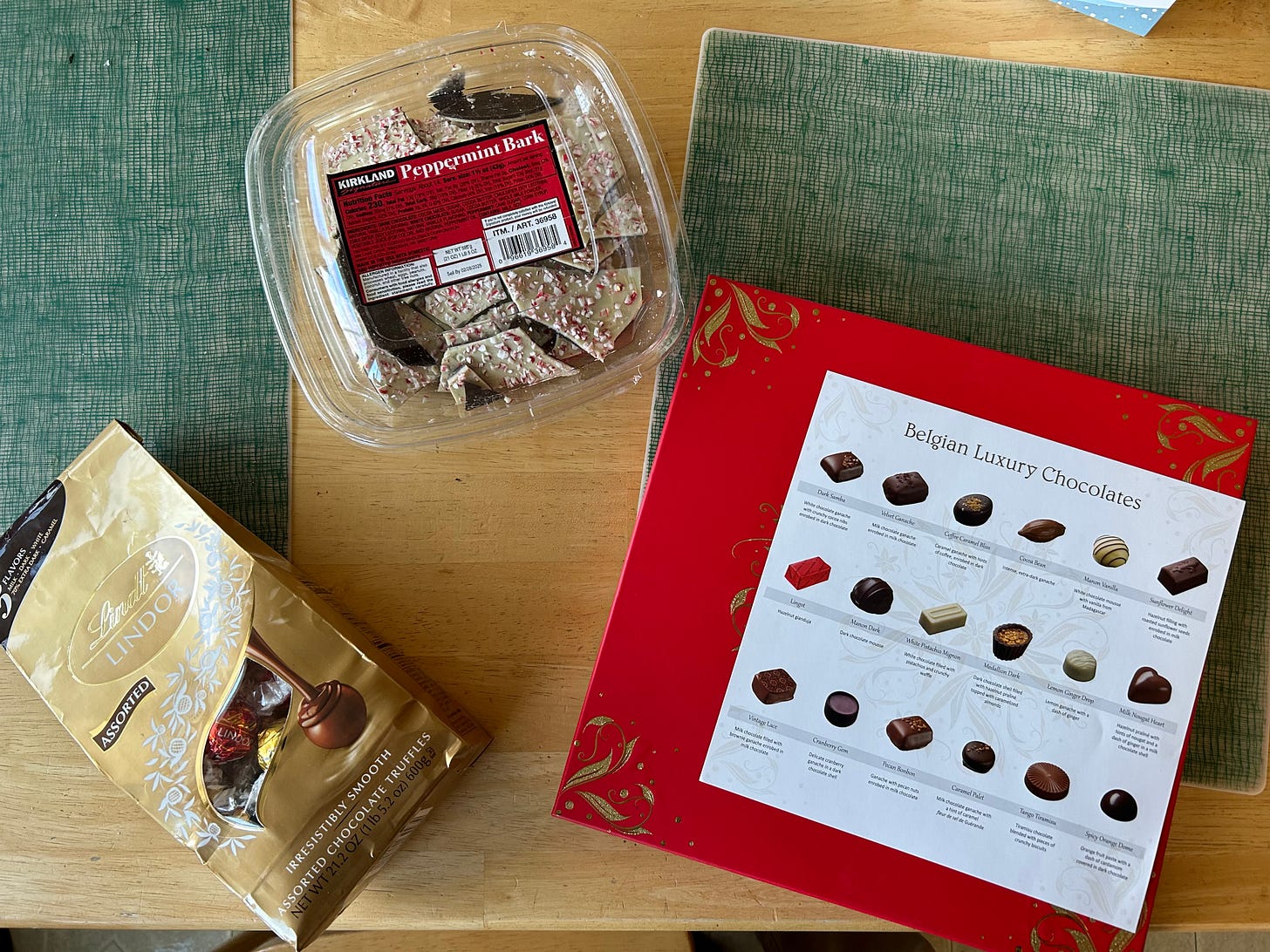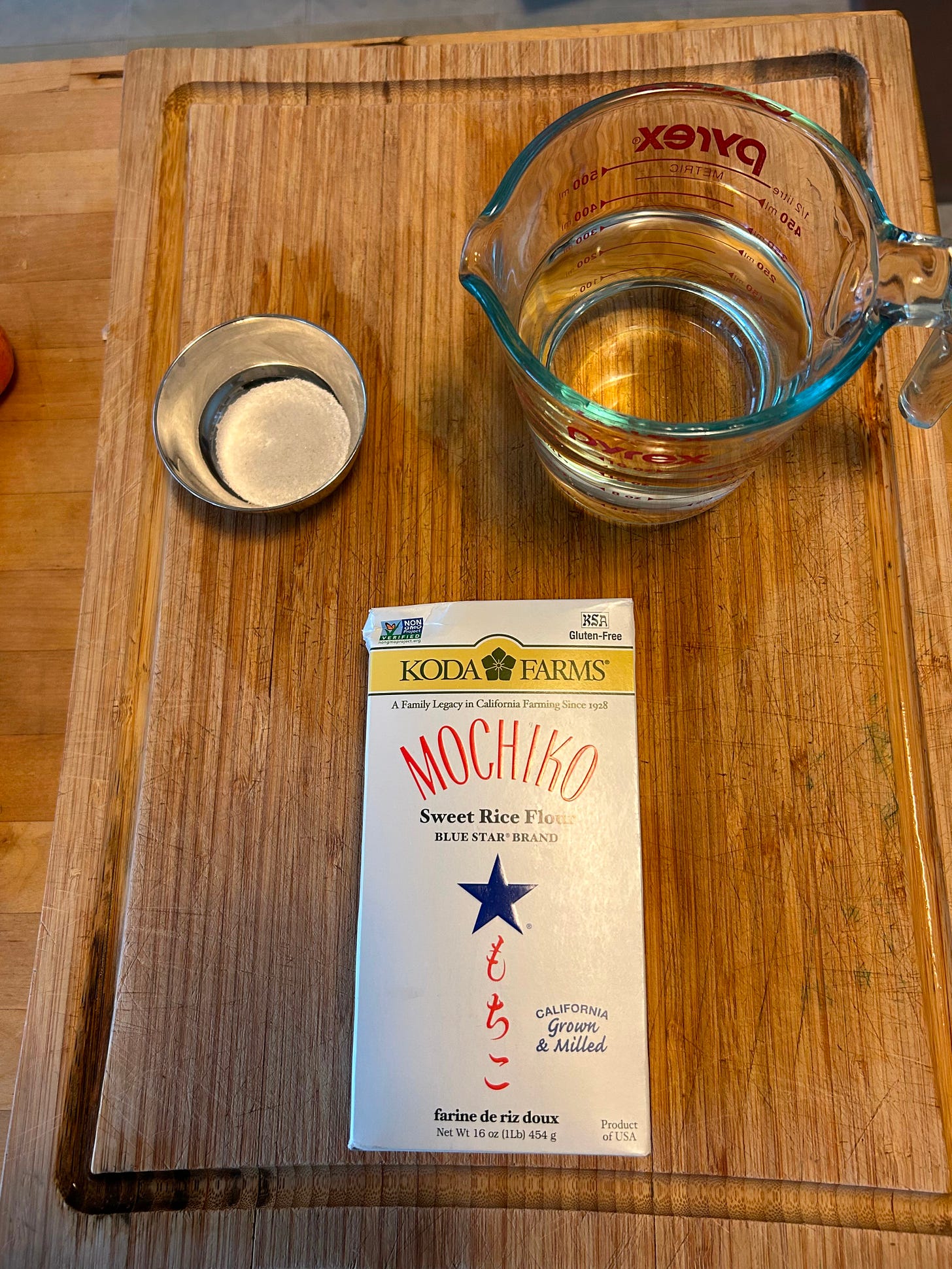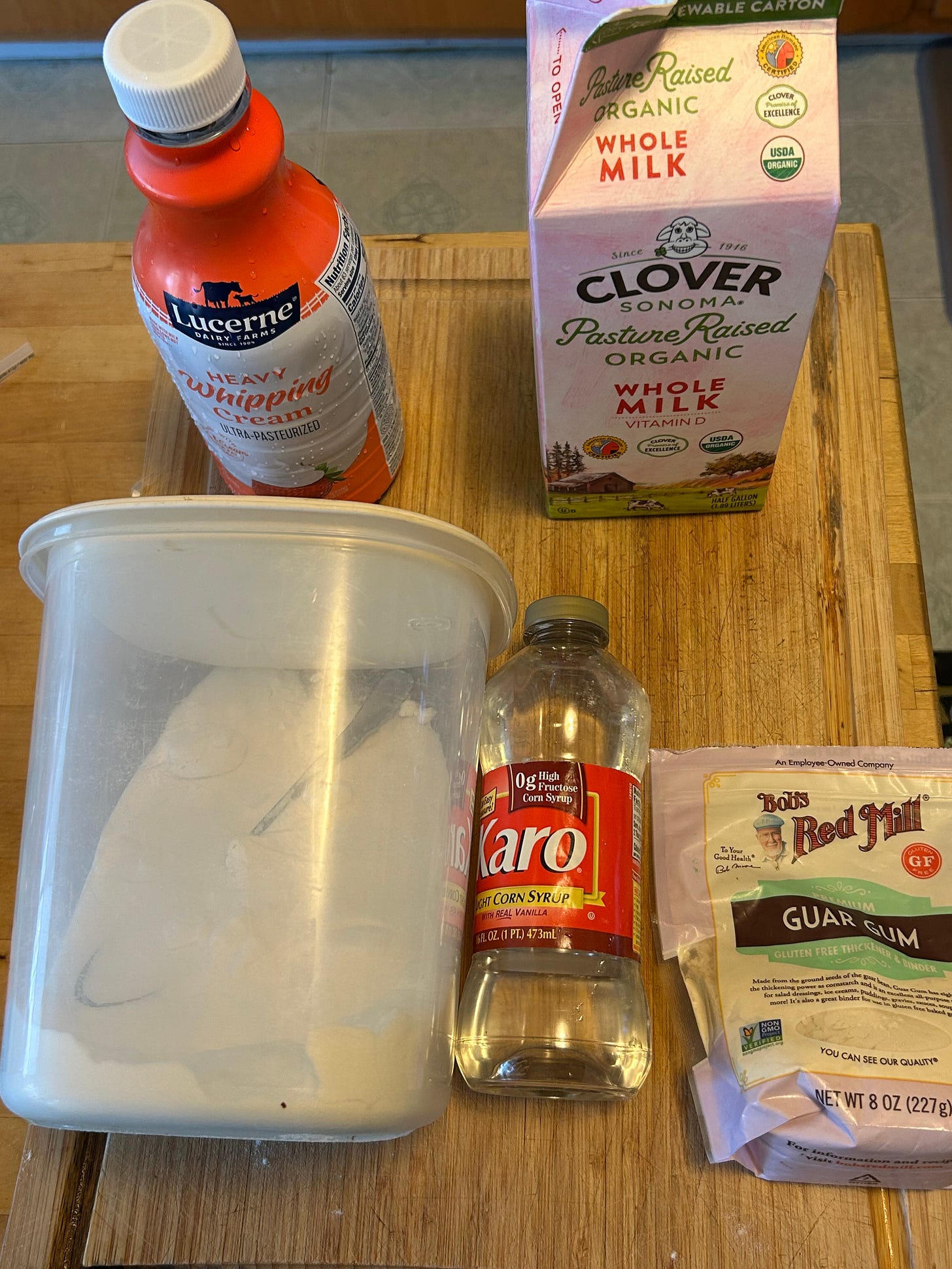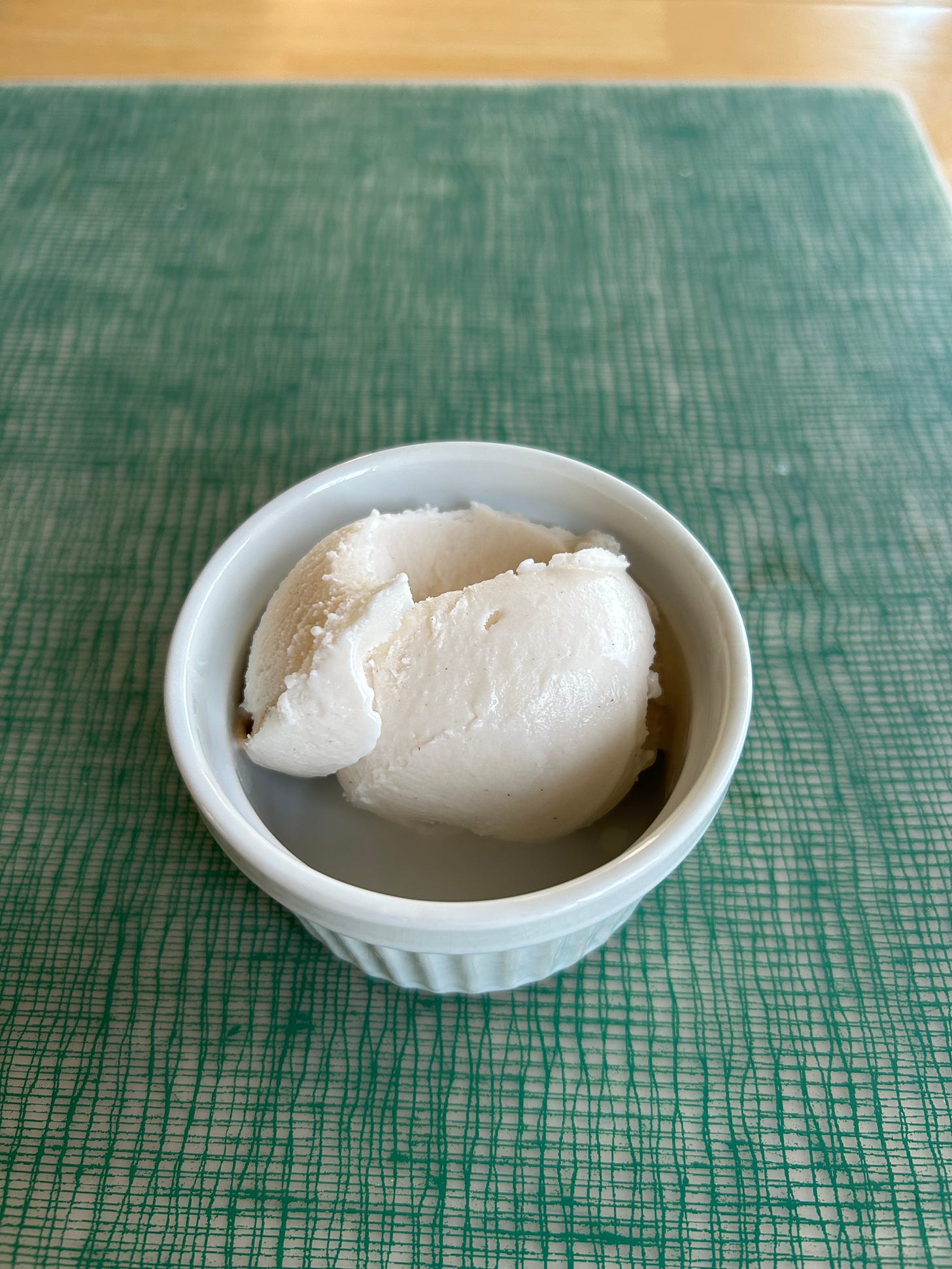Sometimes, winter’s cold really is too much to handle1—hence the massive amount of chocolate I purchased from Costco the other day.
It’s snacking chocolate folks. Snacking. Chocolate. Like most of you (I can only assume), my chocolate consumption spikes right around this time each year, and not just because of the holidays and all the marketing that goes along with them (although I’m sure that plays a role too). It’s also because the weather is chilly and the skies darken early and you just feel like you need some chocolate to get you through the day. Then all of a sudden you find yourself at one of the pinnacles of all human civilization—Costco—and the next thing you know, you’re exiting the store with a sizable haul of chocolate.
I’ve wandered quite a bit off track here. The point I’m trying to make is that I wanted to make horchata-flavored ice cream not because it’s a winter drink, but because it’s winter (more or less).2 I thought it might be comforting at this time of the year in the same way that chocolate is.3 And thus it became this week’s flavor!
For the recipe, I used Adrienne Borlongan’s Sticky Rice Milk base, as rice is at the heart of any horchata recipe (I only realized horchata was made with rice a few years ago…more culinary ignorance!). Borlongan has two versions of her base: one that’s dairy and one that’s non-dairy using coconut milk. I went with the dairy version because I had some heavy cream I wanted to use up.
The first step is to make the sticky rice milk itself. Here are the ingredients:
You may have read that Koda Farms is shutting down. It’s a real shame. They’re an institution out here in California, and deeply loved. Luckily, their mochiko is still available (for now). Borlongan specifically recommends their rice flour in her recipe, so I guess she’s gonna be searching for a replacement just like the rest of us. But once again, I digress! The process of making the rice milk is easy:

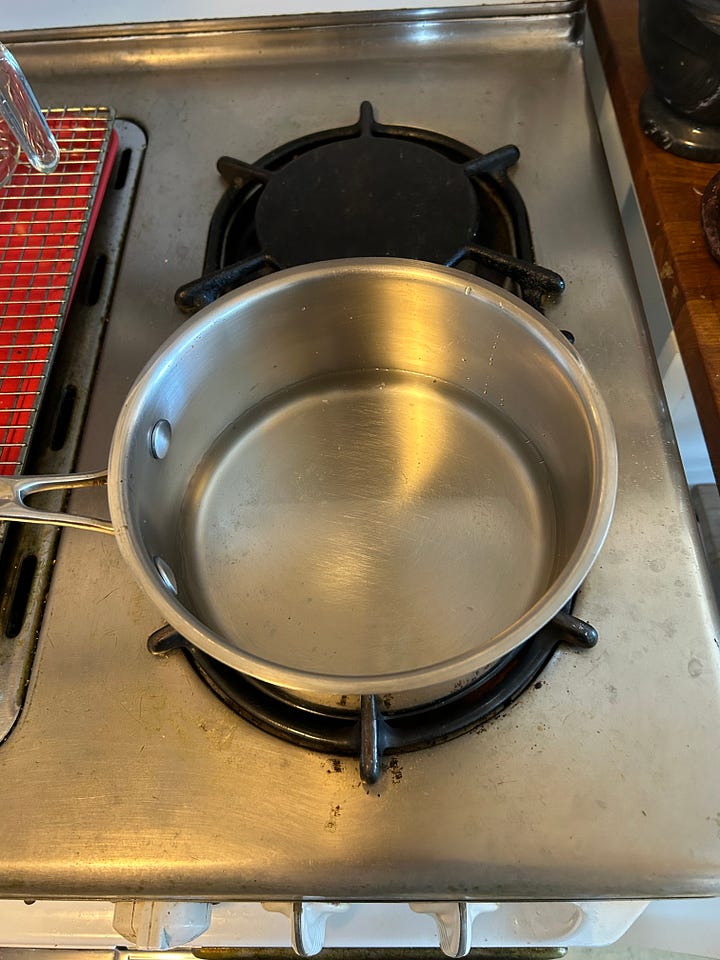

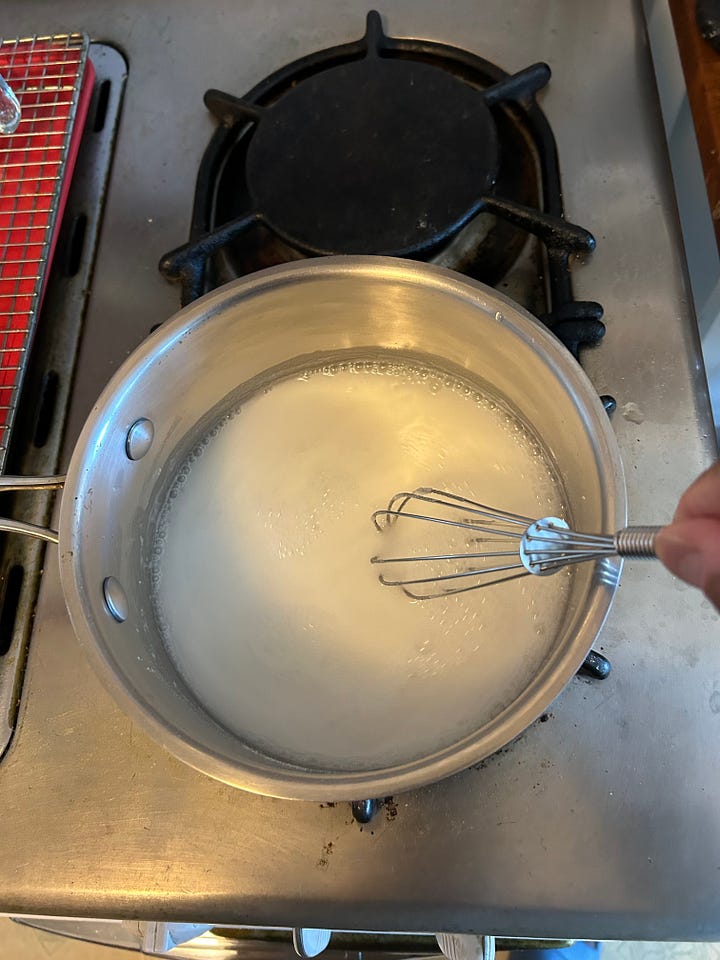
With the rice milk made, I added the almonds and cinnamon and let them steep. As you can see below, the rice milk thickens up considerably:
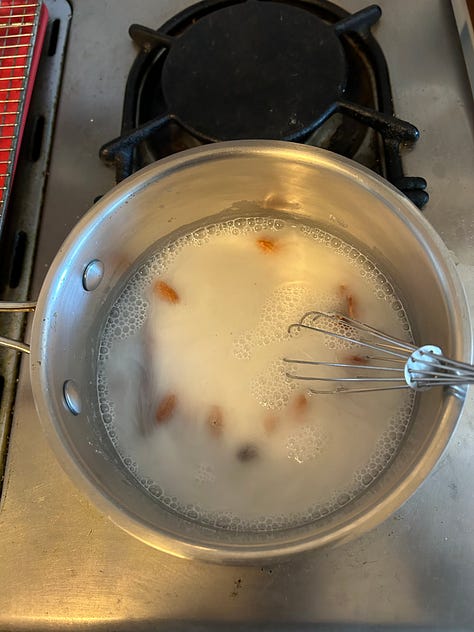
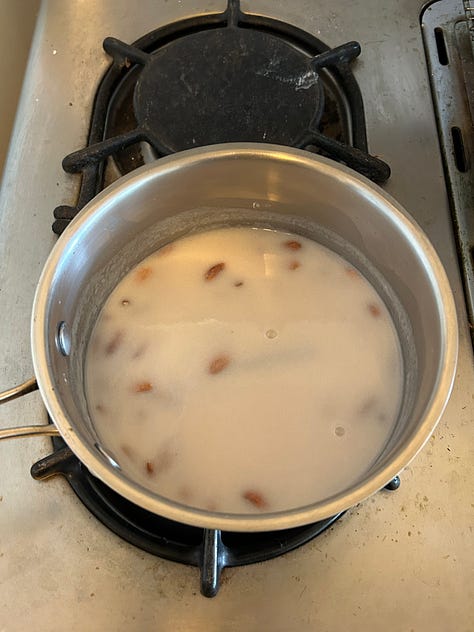
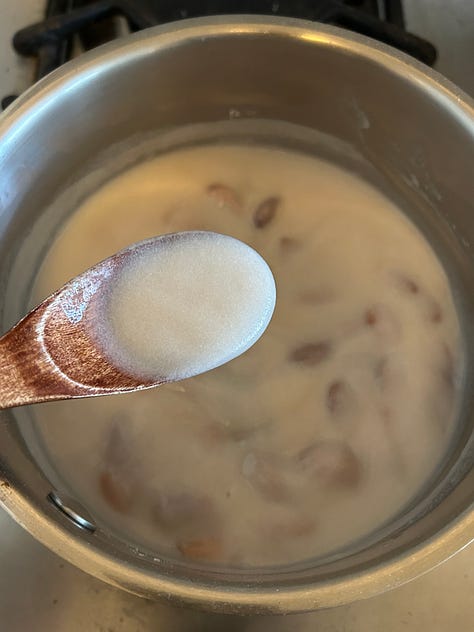
After letting the almonds and cinnamon steep for about 30 minutes, I added the cream, milk, sugar, and corn syrup. Borlongan’s recipe only calls for 2 tablespoons of milk. And I used corn syrup because I don’t have the glucose powder it calls for. I also didn’t include three other ingredients the recipe calls for (more on that below), so it might be fair to say I’m not actually using Borlongan’s recipe. 😅

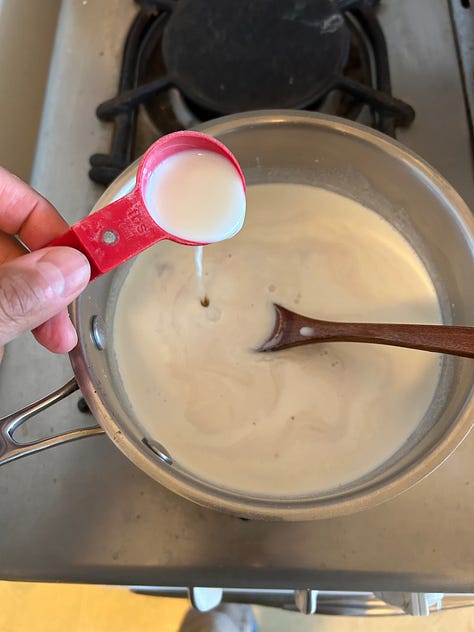

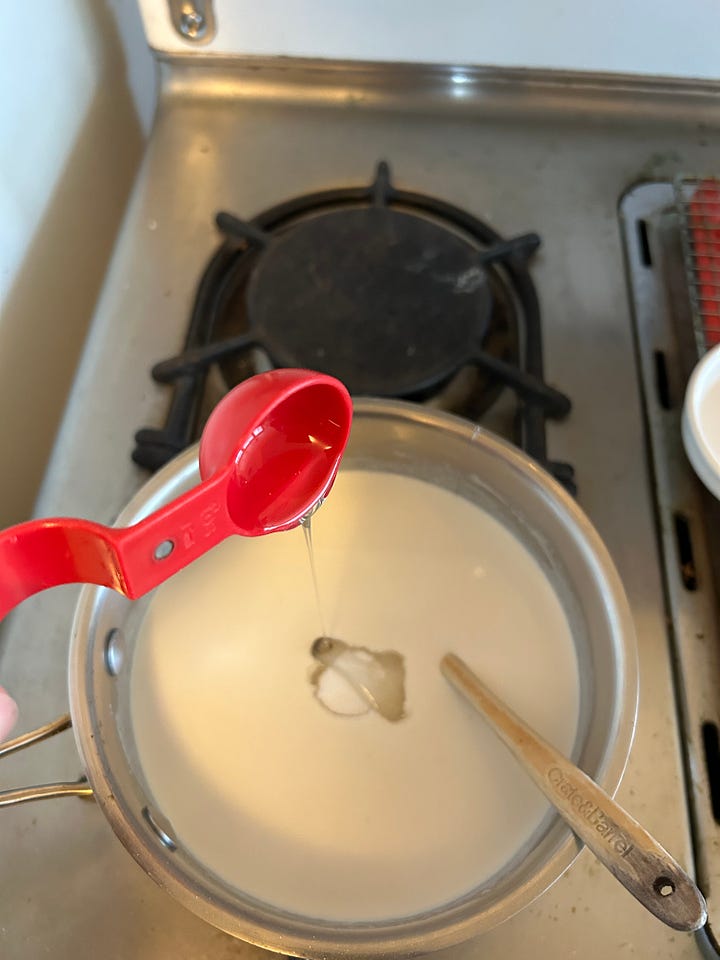

Once the milk, cream, and sugars were combined with the rice milk, I heated the mix slightly to ensure all of the sugars dissolved. After straining the mix, I added a 1/4 tsp of guar gum and a few shakes of ground cinnamon before immersion blending the whole thing.
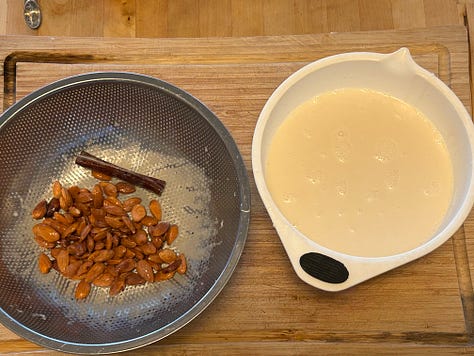
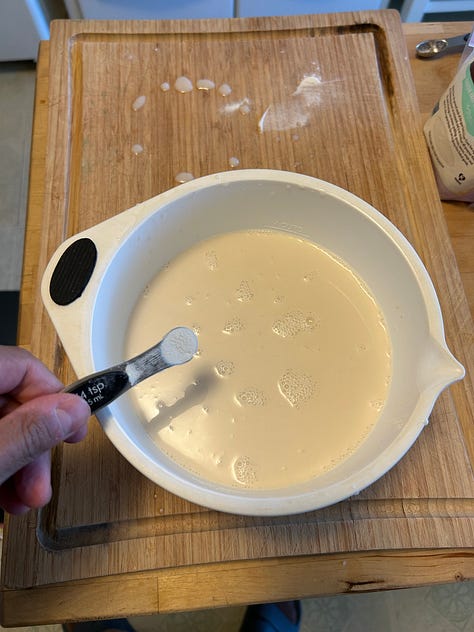

I chilled it in the refrigerator for about 10 hours and then churned it.
Before getting into the results, now is probably as good a time as any to voice my main complaint against this recipe—and Borlongan’s recipes in general: her measurements are annoyingly complicated. She undoubtedly makes great ice cream and has earned great success as a result (9 ice cream shops and counting!). And her cookbook is very very good, full of genuinely fantastic recipes. But take a look at the measurements for the three ingredients in her sticky rice base:
3 tablespoons + 1 teaspoon of sweet rice flour
1/2 teaspoon + 1/8 teaspoon salt
1 and 1/2 cups + 1 and 1/2 tablespoons of water
Why those extra little amounts? Are they truly necessary?4 This measurement dynamic was true for a few of the other nine ingredients that round out the sticky rice base.
In her defense, she gives all the measurements in grams as well, so she’s probably weighing everything (arguably a superior method). But I don’t know…it feels like most home chefs ain’t doing that, so why not come up with simpler proportions, especially when so many other mass-market, make-at-home ice cream recipes do exactly that?
Okay, okay, I’ll stop whining now. Onto the results!
Texture-wise, it scooped well, but it was a bit icy / not as smooth as I would have wanted. This is probably due to the water in the rice milk. I mentioned above that I did not include all of the ingredients Borlongan calls for: I left out the tapioca flour (thickener), refined coconut oil (probably an emulsifier), and lecithin (definitely an emulsifier). Omitting these likely led to the icy-ness of the texture. You get the results of what you put in I guess. But while it was slightly icy, it also had a pleasing creaminess from the rice flour. So some good, some bad.
Taste-wise, it was a solid B. You could taste the rice and the almond flavors, and the cinnamon also came through nicely. However, I do think the whole thing would have benefited from the addition of more cinnamon (see the second photo above).
Overall, I would rate this as a fairly average effort. Not nearly as good as the past two weeks, that’s for sure. Yet it was good enough that I would try making it again. I think horchata has a lot of potential as an ice cream flavor. I just have to get the flavor profile right—additional cinnamon powder or a better-quality cinnamon stick (the one I used had been in the spice jar for a looooong time) would, I think, help in this regard. And the texture issue could probably be solved by simply following the actual recipe!
And that’s it for this edition. Here’s a little Vampire Weekend to send you on your way. See ya next week!
Spotify informed me earlier today that Vampire Weekend was my most streamed artist of 2024.
Horchata is, decidedly, a warm-weather drink; not as much as lemonade or pineapple juice, but a warm-weather drink all the same.
Well, if I’m being honest, I probably also had Vampire Weekend’s “Horchata” stuck in my ear.
The answer is probably yes, because, you know, science (and proper proportions, etc. etc.) But I’m not a details kind of guy, and at-home recipes should be easy.





